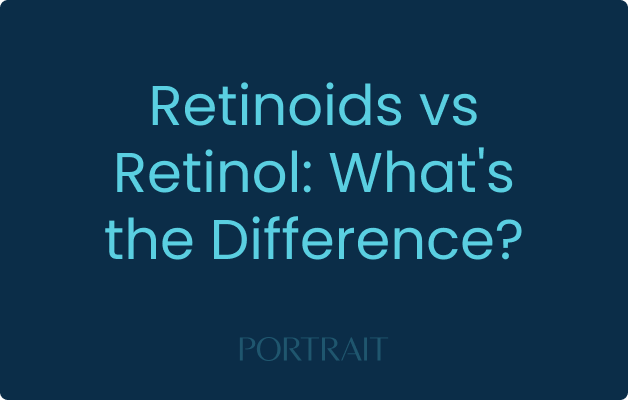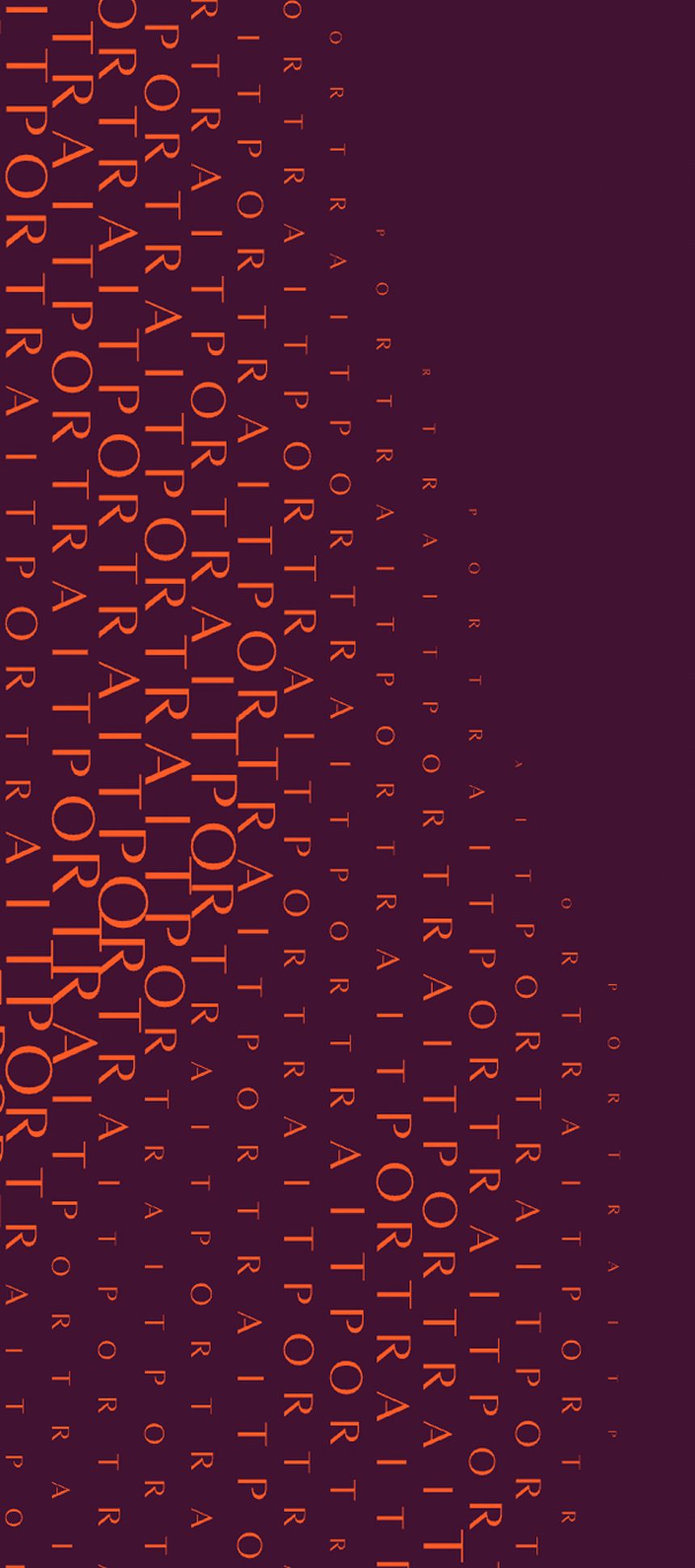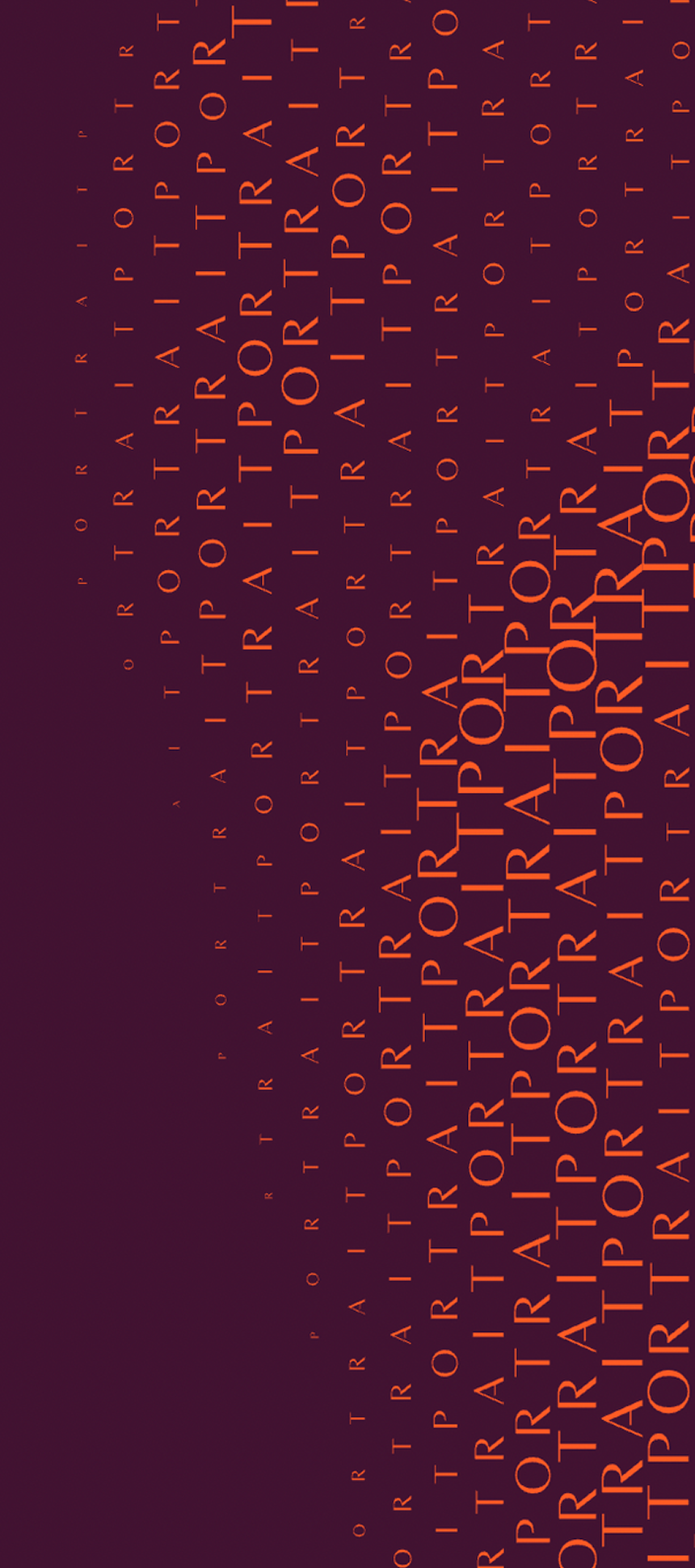Retinoids vs Retinol: What's the Difference?

Empowering Professionals at Every Stage
Portrait offers strategic expertise to help you make informed decisions and achieve long-term success.
Book Intro CallIf you've been scrolling through skincare forums or asking your dermatologist about anti-aging ingredients, you've probably heard "retinoids" and "retinol" thrown around like they're the same thing. Walk into a pharmacy, and you’ll also see all sorts of retinol creams and over-the-counter retinol—so, what do you choose? Are all retinol products and retinoid products the same?
Spoiler: they're not—and understanding the difference can literally change your skin.
Here's the thing: retinoids are potent. Board-certified dermatologists love them because they actually work. They tackle everything from acne and dark spots to pigmentation, fine lines, wrinkles, and signs of aging. This improves your skin texture and conditions. But they can also be confusing, and using the wrong one for your skin type can leave you red, irritated, and frustrated.
This guide breaks down everything you need to know about retinoids, how retinol works, why retinol isn't the only option, and how to use them without turning your face into a flaking mess. Whether you're a skincare newbie or you've tried retinoids before, we'll help you figure out what's right for your skin. Let’s get your skin health in order.
Understanding the Retinoid Family: More Than Just Vitamin A
So what's a retinoid, exactly? Think of "retinoid" as the umbrella term for a whole family of vitamin A compounds. They all work the same way: they speed up how fast your skin cells turn over, meaning your skin sheds dead cells and grows new ones faster than it usually would. An active ingredient.
Why does that matter? Because faster cell turnover kicks off a chain reaction. Your skin produces more collagen, your texture smooths out, dark spots fade, and those fine lines start looking less dramatic. The American Academy of Dermatology recognizes topical retinoids as one of the best things you can use for everything from acne to wrinkles.
Now here's where it gets interesting. Not all retinoids are created equal. The difference comes down to how many steps it takes for the product to convert into retinoic acid, the actual form that does all the work on your skin. Some retinoids require multiple conversions before they become active. Others are already almost there. This is why some options are gentler and take longer to work, while others are stronger and faster but come with more side effects.
You've basically got two camps: over-the-counter options (like retinol and retinaldehyde) that are gentler and perfect for first-time users, and prescription-strength options (like tretinoin and adapalene) that hit harder and faster. Your skin type and what you're trying to treat should determine which path you take.
Retinol vs. Retinoids: What's Actually the Difference?
This is the question we get asked all the time, and honestly, it's where a lot of people get confused. Here's the simplest way to think about it:
"Retinoid" is the family name. "Retinol" is one member of that family.
All retinoids—whether it's a gentle OTC retinol from the drugstore or a prescription tretinoin from your dermatologist—have to go through the same conversion process once they hit your skin. Your body's enzymes convert them into retinoic acid, the active form that binds to your skin cells and tells them to do their job (produce collagen, shed dead skin faster, that kind of thing).
Retinol is the weaker, gentler option. It's several steps away from becoming retinoic acid, which means your skin has to work a bit harder to convert it. Translation: it takes longer to see results (usually 8 to 12 weeks), but your skin is way less likely to freak out. This makes it the perfect choice for beginners or anyone with sensitive or dry skin.
Prescription-strength retinoids like tretinoin (aka Retin-A) and tazarotene are basically already retinoic acid or very close to it. They work fast—you might see fundamental changes in 4 to 8 weeks.
But that speed comes with a price: more redness, more dryness, more skin sensitivity. A dermatologist usually reserves these for serious concerns, such as severe acne, acne scarring, or significant sun damage. Sun protection is important when you’re applying retinoids!
For acne scarring specifically, you might also explore professional treatments like microneedling with PRF in addition to topical retinoids.
Types of Retinoids: From OTC to Prescription
Understanding where each type of retinoid falls on the potency spectrum helps you choose the right option for your skin's needs and tolerance level. Each type represents a different balance between efficacy and tolerance. Your dermatologist can help determine which formulation best aligns with your skin type and specific concerns.
How Retinoids Work: The Science Behind the Results

Want to understand why dermatologists are obsessed with retinoids? Here's what's actually happening on your skin.
When you apply a retinoid, it sinks into your skin, and your body converts it into retinoic acid. This active form then binds to receptors on your skin cells and essentially flips a switch that says, "time to function like healthy skin."
On the surface: Your skin cells start shedding way faster than before. Dead skin cells that have been hanging around, looking dull, are replaced by fresh, new ones. Boom—your skin looks brighter and more refined almost immediately. Plus, because dead cells aren't clogging your pores, your breakouts tend to improve. This is why retinoids are so effective for acne and why dermatologists recommend them.
Below the surface: Here's where the real magic happens. Deep in your skin's dermis (the layer below the surface), retinoids tell your fibroblasts to produce more collagen and elastin. You know, those proteins that keep your skin firm and plump?
They naturally decrease as you age, which is why you get wrinkles. Retinoids basically turn that decline around. They also block enzymes that break down collagen, so you're getting a double benefit—more new collagen, less breakdown of the collagen you have.
And there's more. Retinoids reduce inflammation and calm down melanin production, which is why they're ridiculously effective for dark spots and hyperpigmentation—whether you've got sun damage or post-acne marks.
For more advanced treatments of hyperpigmentation and texture concerns, professional skincare services like chemical peels and facials can be combined with topical retinoids for enhanced results.
Building Your Retinoid Routine: A Skin-Type-Specific Guide
Here's the deal with retinoids: they work best when you introduce them slowly. We're not trying to scare you—it's just that jumping in too fast is the fastest way to end up with red, flaky skin and then abandon retinoids altogether. The trick is to be patient and let your skin adjust. We call this "retinization," and it's totally normal.
For Dry Skin and Sensitive Skin Types
If your skin tends to be on the dry or sensitive side, start gently. Pick a low-concentration retinol or retinyl ester and use it just 2 to 3 times a week to begin. Here's how:
- Cleanse with something gentle: Wash your face with a mild cleanser. Skip anything too stripping or exfoliating right now.
- Wait for your skin to dry completely: This is important. Apply retinoids to dehydrated skin to minimize irritation.
- Use a tiny amount: A pea-sized portion is all you need. Seriously, more isn't better.
- Apply moisturizer right after: This "buffering" technique is your secret weapon. It reduces irritation as your skin adjusts. Look for a good moisturizer with hydrating ingredients like ceramides.
- Always use sunscreen in the morning: Retinoids make your skin more sun-sensitive, so SPF 30 or higher is non-negotiable every single day.
After 2 to 4 weeks of this routine, if your skin feels good, bump it up to every other night. Then gradually work toward nightly use—but only if your skin is handling it. There's no prize for getting to daily use in two weeks. Slow and steady wins here.
For Normal, Oily, and Combination Skin
If your skin is more resilient, you can start a bit stronger. Try a retinaldehyde or low-dose OTC retinol, and you can probably get away with using it 3 to 4 times a week right from the start. Follow the same cleanse-dry-apply-moisturize routine, but you might find you can skip the "buffer" step of applying moisturizer first (though those with more sensitive skin should always buffer). You can also move up to regular use a bit faster, though again, patience is your friend.
Moving to Prescription-Strength Options
After a few months of using OTC retinoids successfully, you might be ready to talk to a dermatologist about stronger prescription options. This is especially true if you're dealing with severe acne, deep wrinkles, or significant sun damage.
Your dermatologist will evaluate your skin, discuss your goals, and recommend whether tretinoin, adapalene, or tazarotene makes sense—and at what strength. Don't skip this step; having professional guidance makes a huge difference.
What to Expect and How to Navigate Retinization
Let's be real: when you first start using retinoids, your skin might get a little angry. This adjustment phase is called "retinization," and it's completely normal. The good news? It usually clears up in 2 to 6 weeks. The bad news? You might look a bit rough in the meantime.
Here's what you might experience:
- Redness and irritation: Not severe, usually just mild. A good moisturizer helps tons.
- Dryness and flaking: Yeah, you might peel. It's not cute, but it's temporary and means your skin is turning over faster.
- Minor peeling: This is actually good—it's your skin working. Just don't go overboard with at-home exfoliation (though professional treatments like facials and chemical peels can be beneficial once your skin is adjusted to retinoids).
- More sensitive to the sun: This is why sunscreen is so important. Your skin is more vulnerable to UV damage right now.
Things not to do during retinization:
- Don't combine retinoids with other actives like vitamin C, exfoliating acids, or benzoyl peroxide. Your skin is already dealing with enough.
- Don't skip moisturizer to "let your skin adjust." That's actually the opposite of what you want. Keep it hydrated.
- Don't jump up in frequency just because you're impatient. Slow and steady really does win.
- Don't ignore sunscreen. Seriously. Use SPF 30+ every single day.
If after 6 weeks your skin is still super irritated or it's getting worse instead of better, stop and consult with a dermatologist. You might need a different formulation or a lower concentration, and that's totally okay.
Choosing Your Retinoid
Retinoids are legit some of the most effective anti-aging and acne-fighting ingredients out there. No question about it. But the key to success is picking the right one for your skin and your situation.
If you have sensitive or dry skin, start with a gentle OTC retinol. It takes longer to work, but your skin won't hate you. If your skin is resilient and you've got specific concerns like severe acne or serious sun damage, a prescription-strength retinoid might be worth talking to a dermatologist about.
No matter which retinoid you choose, consistency is everything. Retinoids work over time, and you'll get better results—and fewer side effects—if you're patient and stick with it. Plus, keeping your skin barrier happy with a good moisturizer and protecting it from the sun makes all the difference.
FAQ
Are retinoids and retinol the same thing?
Nope. Retinol is just one type of OTC retinoid. "Retinoid" is the bigger umbrella that includes everything from gentle retinol to prescription-strength options like tretinoin and adapalene.
Is retinol safe during pregnancy and breastfeeding?
Skip topical retinoids if you're pregnant or breastfeeding—better safe than sorry. Talk to your doctor about what skincare ingredients are safe for you during this time.
Can I use retinoids with other skincare ingredients?
Hold off on combining retinoids with vitamin C serums, exfoliating acids, or benzoyl peroxide until your skin has fully adjusted (at least 6+ weeks in). After that, it depends on your skin's tolerance and what you're using.
How long before I see actual results?
OTC retinol usually takes 8 to 12 weeks of consistent use to show meaningful improvements. Prescription-strength retinoids can work faster—sometimes 4 to 8 weeks—but it really depends on your skin and the concern you're treating.
Should I use retinoids every night?
Start with 2 to 3 times a week and work your way up as your skin tolerates it. Jumping straight to nightly use is the number one reason people get frustrated and quit. Your skin will adjust faster if you're patient.
Ready to Help Your Patients Transform Their Skin?
If you're a medical professional looking to launch or grow a medical spa and help your patients achieve their skincare goals with professional retinoid treatments and guidance, Portrait Care has the tools and expertise to help. Learn how Portrait serves aesthetic providers and medical spas and get in touch with our team to discuss your practice vision.
One Platform.
Everything You Need.
Everything You Need.
Portrait combines the technology, support, and savings to run and scale your modern medical wellness business.
Book Intro Call
Stay Connected with Portrait Care
Subscribe to our email list and receive the latest insights, updates, and exclusive content delivered straight to your inbox.



.png)
.png)